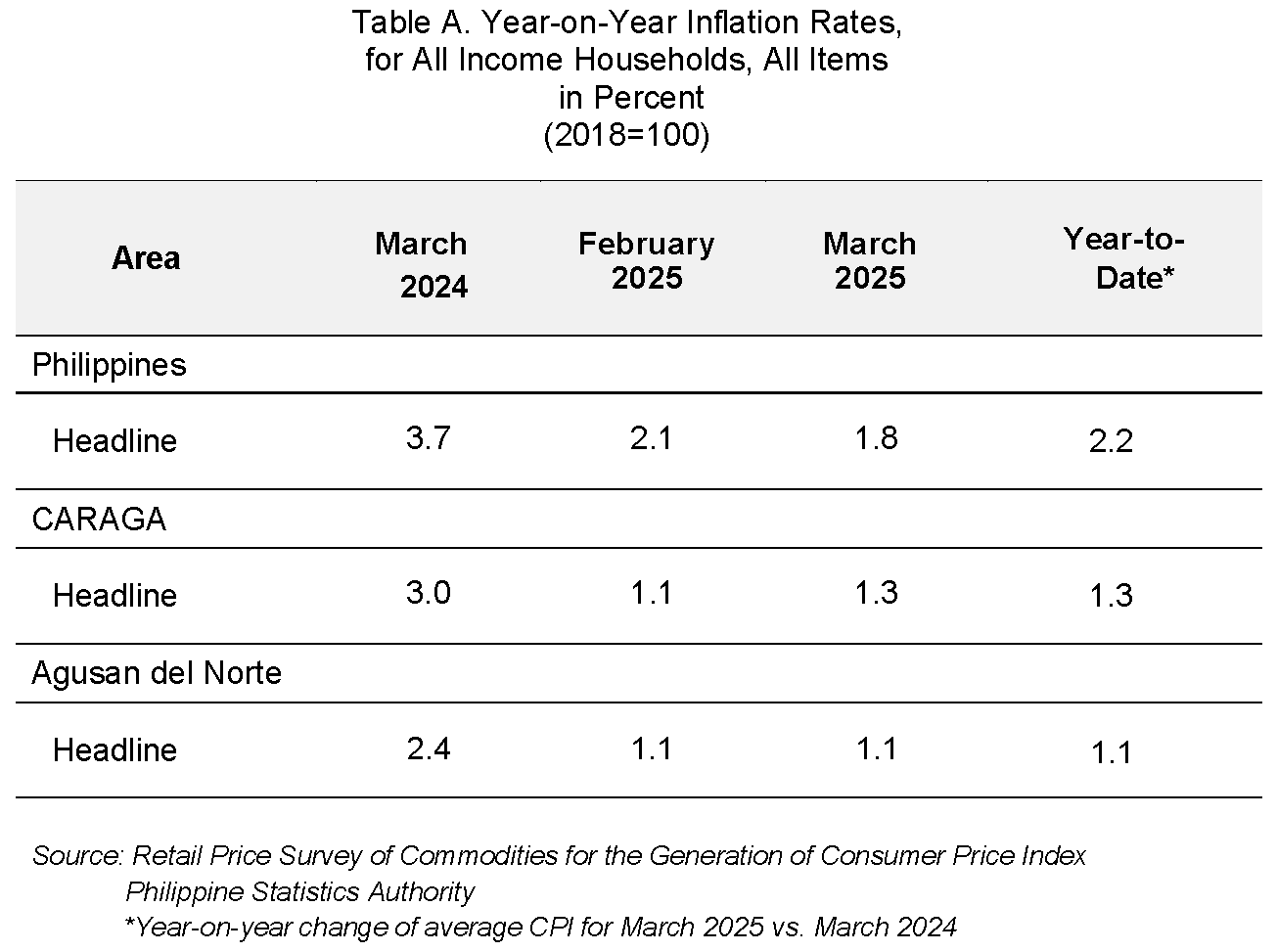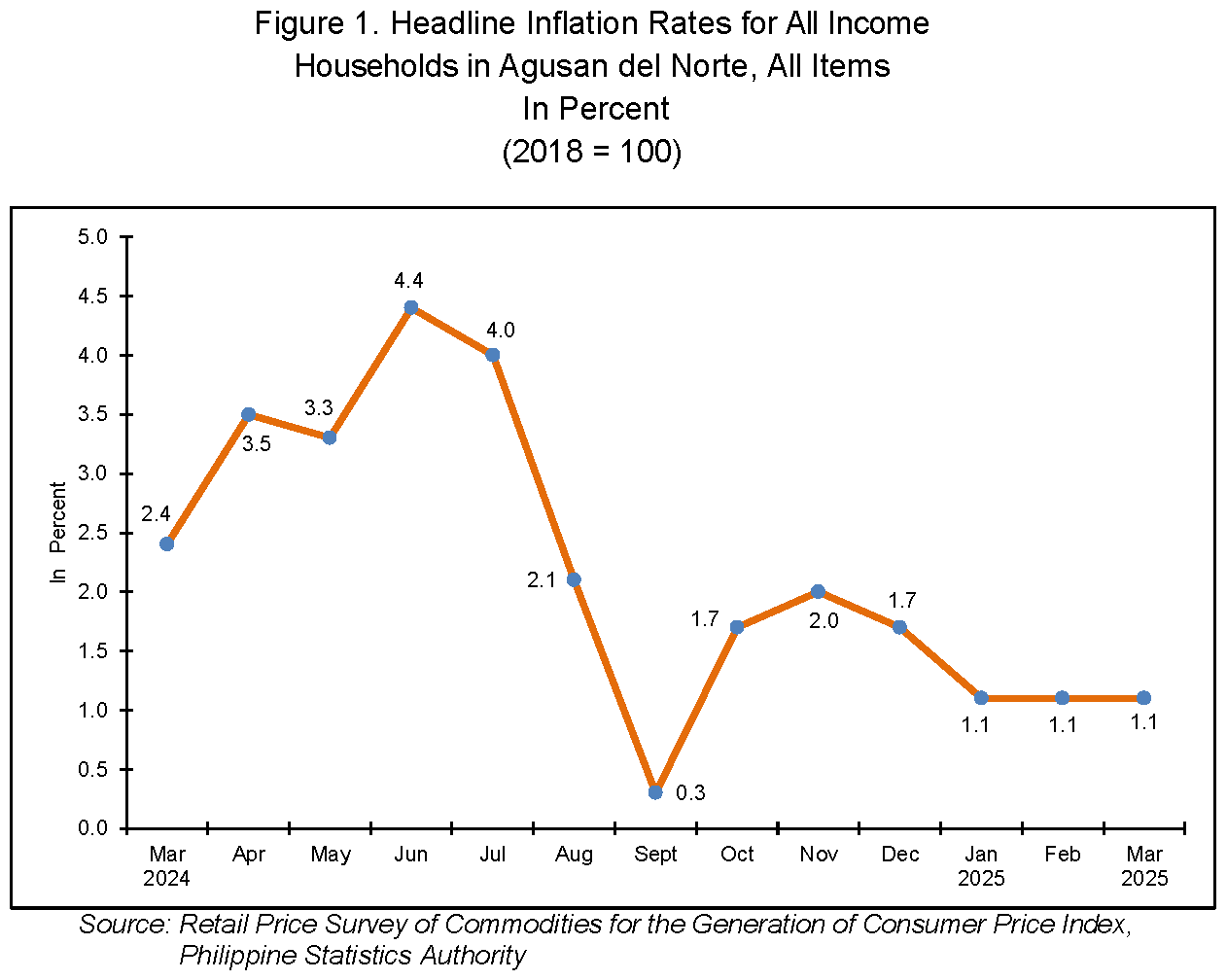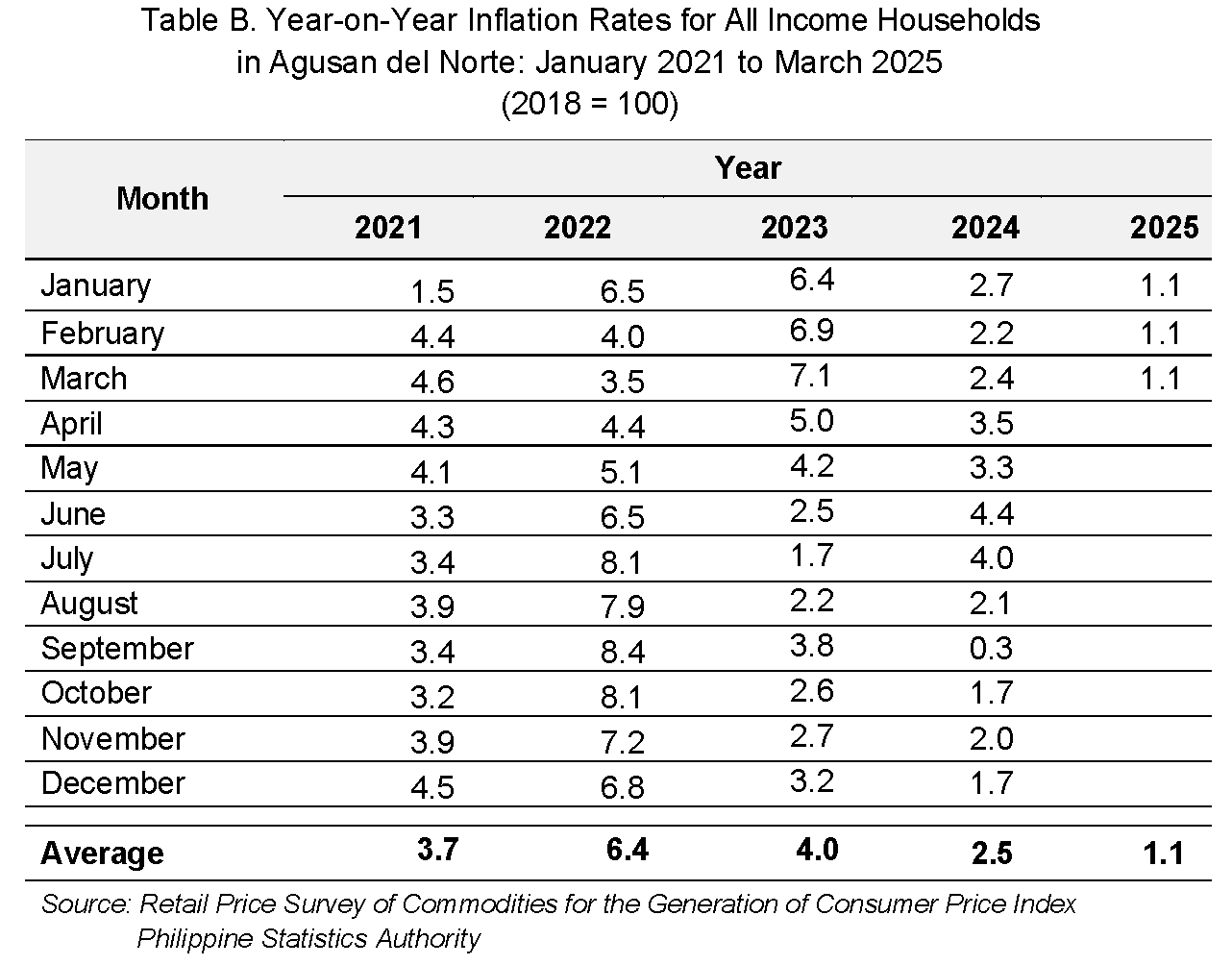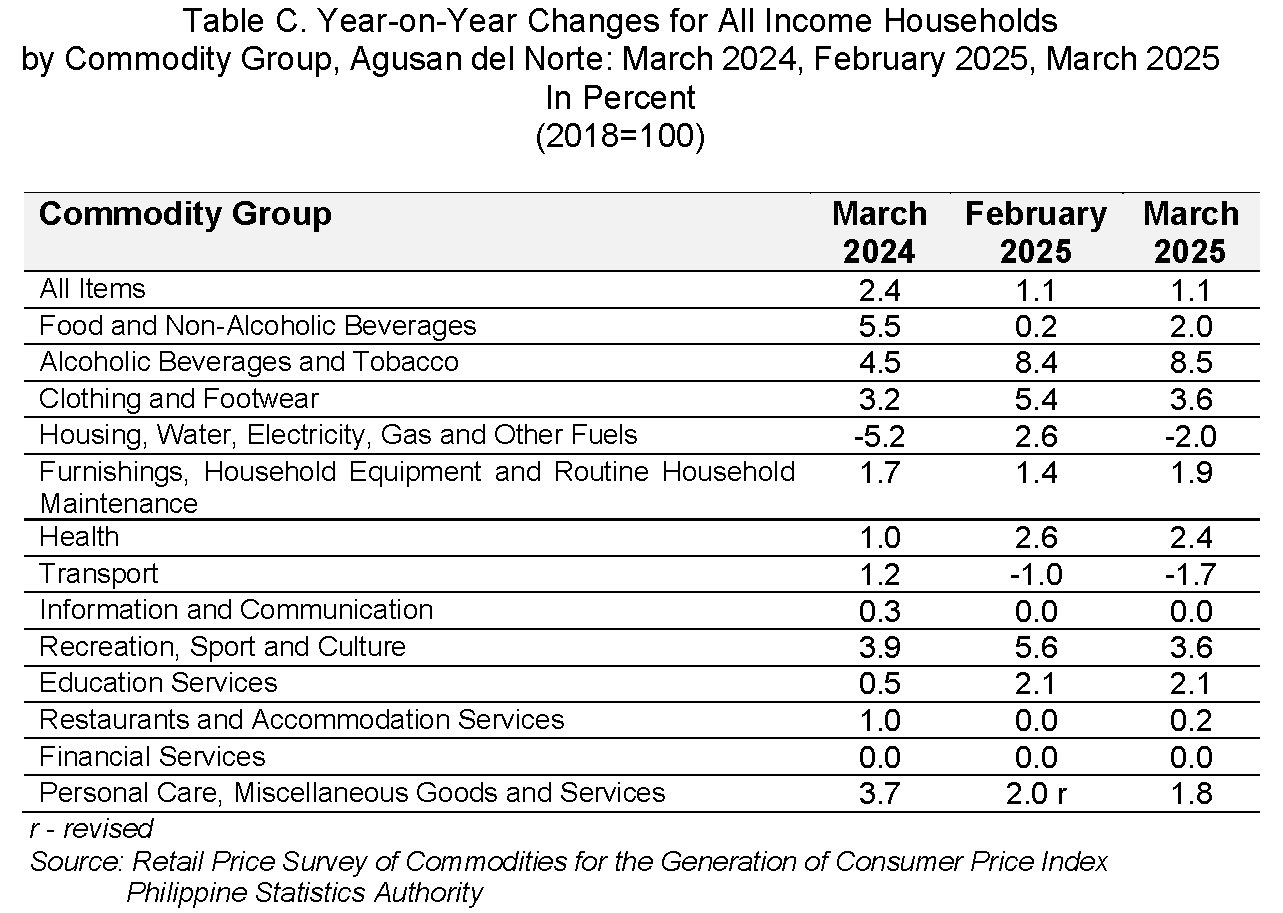
The headline inflation rate in Agusan del Norte steadies at 1.1 percent in March 2025.
In March 2025, the inflation rate for the Province of Agusan del Norte remained constant at 1.1 percent from February 2025. This brings the provincial average inflation from January 2025 to March 2025 also at constant inflation of 1.1 percent. In March 2024, the inflation rate was higher at 2.4 percent. (Figure 1, Table A and B)

Major Contributor to the March 2025 Inflation
Among the 13 commodity groups, the main driver of the overall inflation in March 2025 was the higher year-on-year growth rate of the heavily weighted food and non-alcoholic beverages at 2.0 percent during the month, from 0.2 percent in the previous month. While in March 2024, this commodity group recorded 5.5 percent inflation, which is higher than the current month. Its contribution to the overall inflation for March 2025 accounted 86.8 percent of the total share.
Following the said commodity group is alcoholic beverages and tobacco at 8.5 percent inflation in the current month, from 8.4 percent inflation in February 2025, and 4.5 percent inflation during the same month of 2024, contributing to 21.5 percent of the total share. While clothing and footwear recorded 8.0 percent of the total share, at 3.6 percent inflation in March 2025, from 5.4 percent inflation in the previous month, and 3.2 percent inflation in March 2024 which indicated a lower inflation, compared to the reference month.

Major Contributor to the Year-on-Year Inflation Trend
Of the thirteen (13) commodity groups, the heavily weighted food and non-alcoholic beverages recorded 2.0 percent inflation in March 2025, from 0.2 percent inflation in the previous month. This commodity group posted an increase in the overall inflation of the province.
On the other hand, housing, water, electricity, gas and other fuels, also considered a heavily weighted commodity group, posted a decrease in March 2025 at -2.0 percent inflation, from 2.6 percent inflation in February 2025.
Inflation Rate by Commodity Group

Food Alone Inflation
In March 2025, the overall food inflation at the provincial level increased to 1.9 percent from -0.1 percent in February 2025. In March 2024, food inflation was observed at a higher rate of 5.8 percent. Among the food groups, fish and other seafood mainly influenced the upward trend of food inflation in March 2025 9.9 percent, from -4.6 percent in the previous month. This food group contributed 78.9 percent share to the overall food inflation in the province. Following the mentioned food group, vegetable, tubers, plantains, cooking bananas and pulses also posed an increase in the current month at 8.5 percent inflation, from 1.5 percent in February 2025, contributing to a total of 15.3 percent of the overall share of food inflation in the province.

The Purchasing Power of the Peso (PPP) in Agusan del Norte decreases at Php 0.80 in March 2025, indicating a further decline in its value due to the persistent effects of inflation on consumer purchasing power.
This means that a peso in 2018 is now equivalent to only 80 centavos in March 2025. As a result, consumers need Php 124.50 to purchase the same goods and services that cost Php 100.00 in 2018, emphasizing the rising cost of living in the province.
TECHNICAL NOTES
The Philippine Statistics Authority generates and announces the monthly Consumer Price Index (CPI) based on the nationwide survey of prices for a given basket of goods and services. Two important indicators, the inflation rate and purchasing power of the peso (PPP), are derived from the CPI which are important in monitoring price stability and the value of the country’s currency.
The Consumer Price Index (CPI) is an indicator of the change in the average prices of goods and services commonly purchased by consumers relative to a base year. It shows how much on the average prices of goods and services have increased or decreased from a particular reference period known as base year.
Inflation Rate refers to the rate of change in the average price level as measured by the CPI between two periods. It is interpreted in terms of declining purchasing power of money.
The Purchasing Power of the Peso (PPP) indicates the value of the peso in the period under review as compared to the value of the peso in the base period. It is computed as the reciprocal of the CPI for the period under review multiplied by 100.
Approved by:
(Sgd.) REYNELO S. MAGNO
Chief Statistical Specialist, PSO – Agusan del Norte
Telephone number: (085) 817-3193 / Telefax No.: (085) 225 – 2097
Email address: agusandelnorte@psa.gov.ph

